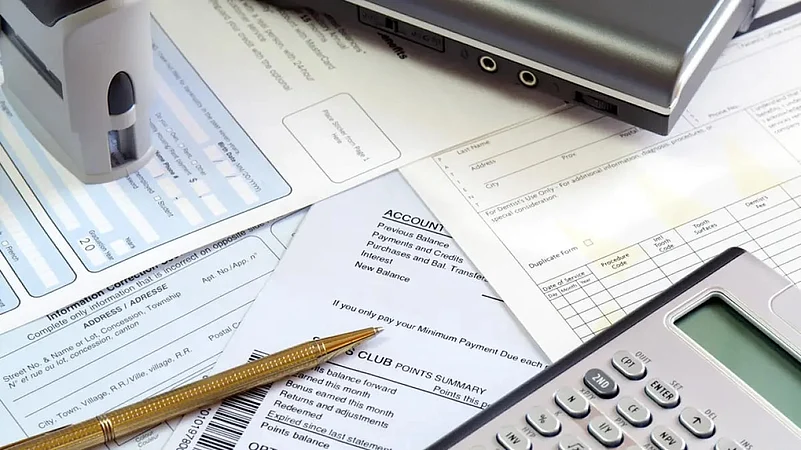Of the many alternative investment opportunities available to investors in India, invoice discount investing is now gaining popularity with retail investors.
Though it has traditionally always existed, for retail investors, the opportunity to invest in these was non-existent until a few years ago.
"Invoice discounting is not a new concept in India. It was traditionally done by banks, but recently, the avenue has been open for retail investors to participate, too. One of the key criteria for the investor to evaluate is the credibility of the final party who will make the payment at a future date", says Vijay Kuppa, co-founder of Orowealth, a wealth and investment management fintech start-up.
But before we understand what invoice discounting is, let us first understand the nuances of business payment.
How Are Invoices Settled?
Almost 90 per cent of transactions are settled using deferred credit schemes, like bills receivable and the like, rather than through instant cash payments. So, what effectively happens is that bills of exchange vouchers are issued by merchants or vendors for purchases and sales, and they are honoured after a specific pre-agreed time. This bill of exchange is also a negotiable instrument under the Negotiable Instrument Act, 1881.
Let’s suppose you are a paper company and you supply paper to a copy manufacturing company. So, you will deliver the paper to the company, draw up a bill, and send it to them for verification and approval.
Once the company accepts the bill, it becomes a bill receivable for you and a bill payable for the other party (the manufacturing company). Now, depending on the terms of payment, you will be paid within 30 days, 60 days, 90 days, or more. This payment cycle varies from company to company.

What Is Invoice Discounting?
The approved bills receivables, which the vendors or merchants receive from their clients, are honoured after a specific time. So, this creates a time lag between the supply of goods and their payments. To solve this, vendors go to any participating bank or financial institution and get the said bill receivable discounted, i.e., sell it at a discount for upfront cash.
"Invoice discounting is the process through which businesses leverage their receivables to avail financing for short-term requirements." Small-and medium-sized companies raise invoices against the big corporations (blue-chip companies) for the services provided or goods supplied. To avoid the delay, they bring their invoices to their preferred invoice discounting service platforms, and within 1-2 days, these invoices are converted to funds and transferred to businesses at a discount rate that is defined as per the risk evaluation and market acceptability and tenure (typically ranging from 30–120 days), "says Anurag Jain, founder & executive director at KredX, an invoice discounting platform.
Let’s say, for instance, a copy manufacturing company owes you Rs. 1 lakh for supplying paper. As per their policy, they will honour the invoice after 90 days. So, for 90 days, the Rs 1 lakh, which is payment receivable in your account, is locked. So, you approach the bank and sell them this bill receivable for, say, Rs 90,000 in instant cash. The bank will then collect Rs 1 lakh from the paper manufacturing company after 90 days. By doing this, you are getting immediate cash for the services rendered, and the bank will earn Rs 10,000 from this deal.
"Imagine there is an e-commerce platform that empowers thousands of vendors to sell their goods on the platform. Whenever someone buys any goods from this platform, the payment to the platform is done in real time, but the platform generally has a credit period of 90 days for payment to vendors. So, for 90 days, the vendor’s working capital is tied up, and if he wants money to fund his business, he may resort to financing. Since these vendors are generally smaller in terms of scale of operations, bank financing is not a preferred option, as it is time-consuming and involves a lot of paperwork. Instead, these vendors resort to invoice discounting, "adds Kuppa.

How Can Retail Investors Invest In Invoice Discounting?
There are a lot of platforms, such as KredX, Orowealth, and TradeCred, among others, which have facilitated investments in invoice discounting, depending upon the risks and other factors. The minimum investment amount varies with each platform, and it can be as low as Rs. 50,000.
"Invoice discounting platforms connect verified vendors and enterprises with investors looking for some returns. Businesses come on the platform to list their unpaid invoices to get working capital. Investors help these businesses with instant cash and get returns within 30–90 days of their investment. An investor can be anyone—an individual resident, HUF/proprietorship registered in India, institutional investors, banks/NBFCs/other financial institutions, or NRIs (who have an NRO account and comply with basic predefined KYC guidelines, i.e., PAN card and valid Indian address proof), says Jain.














